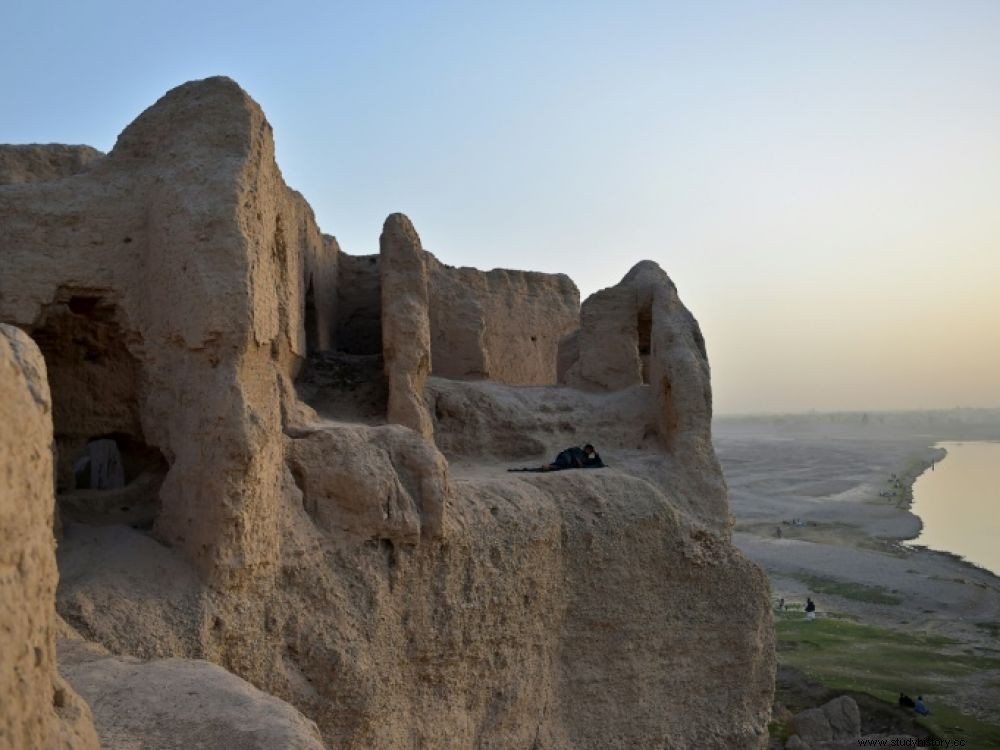
The ruins of the 11th century Qala-e-Kohna royal city near Lashkar Gah in Helmand province on March 27, 2021 in Afghanistan
Overlooking the nearly dried-up stream, on the outskirts of Lashkar Gah, the capital of Helmand province, stands an astonishing palace complex of ocher clay, with weathered contours, called by the locals Qala-e -Kohna and dating from the 11th century. Called Lashkari Bazaar by archaeologists, it forms the only known example of a winter residence of the Ghaznavid and then Ghorid sultans. These two dynasties reigned between the 10th and 13th centuries over a region that included present-day Afghanistan, spreading Islamic art as far as northern India.
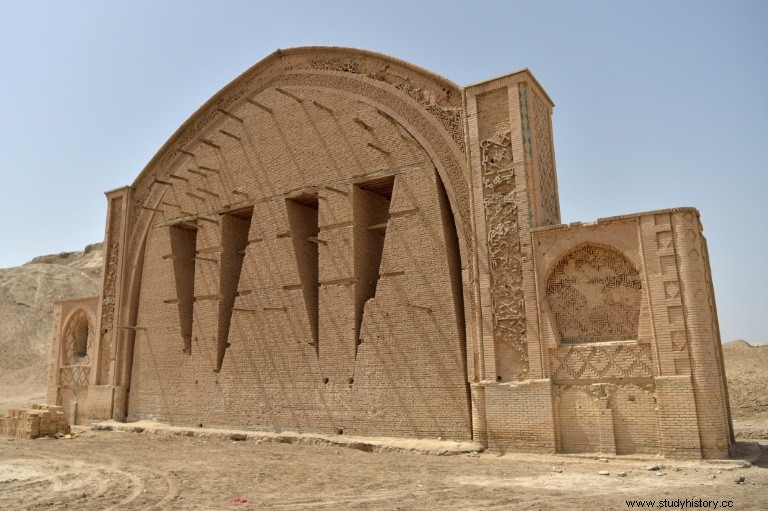
The arch of the citadel of Qala-e-Bost, near Lashkar Gah, in Helmand province, on March 27, 2021 in Afghanistan (AFP - WAKIL KOHSAR)
Other scattered constructions extend over ten kilometers to the south, to the citadel of Bost, known for its arch. The whole has aroused interest for its scale, its remarkable architecture and its murals. "There is no place in the Islamic world where there is something like this, such a coherent, elaborate whole, and despite everything for the moment still relatively well preserved" , told AFP Philippe Marquis, the director of the French Archaeological Delegation in Afghanistan (Dafa).
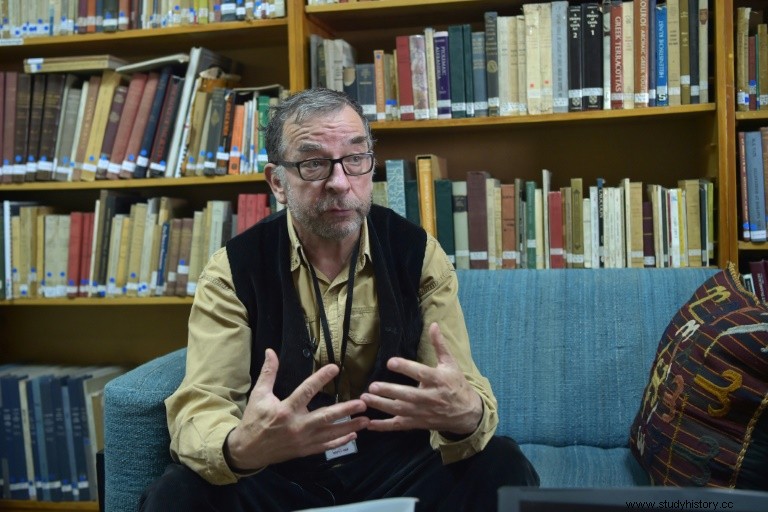
Philippe Marquis, director of the French Archaeological Delegation in Afghanistan (Dafa), during an interview with AFP on March 29, 2021 in Kabul (AFP - WAKIL KOHSAR)
"In the end, we know very little", he underlines, adding that it "is important to preserve it because we are sure that it would teach us a lot about this period" . But these monuments, made of bricks and adobe, are threatened by the modern dwellings of the expanding city, and by the presence within their walls of families driven out of rural areas which the Taliban have taken over. These took place in the middle of ornate arches, partly collapsed towers, niches that once housed paintings and sculptures.
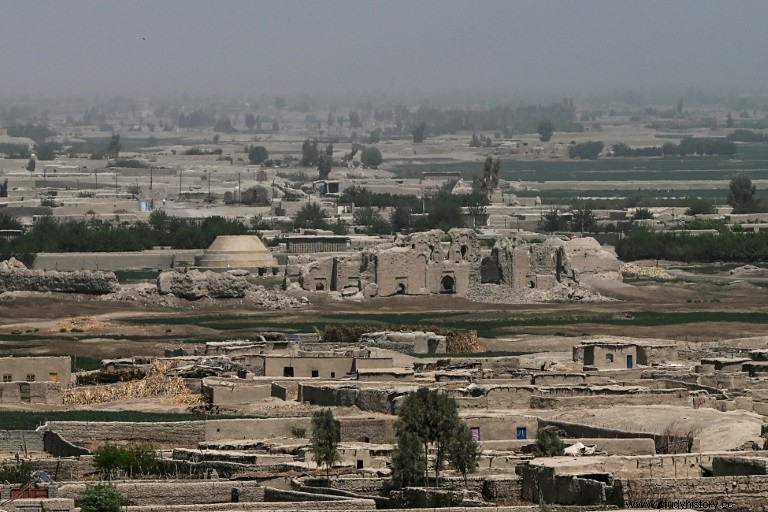
The ruins of a royal city near the citadel of Qala-e-Bost, near Lashkar Gah, in Helmand province, on March 27, 2021 in Afghanistan (AFP - WAKIL KOHSAR )
The new occupants added windows, doors and barbed wire, covering the walls with a mixture of clay and straw to prevent them from collapsing.
"A place for ghosts"
A blue wrought iron door opens onto Agha Mohammad's "house", made up of two small rooms with very high walls that he coated with this mixture. In one of the rooms, he added a bamboo roof, from which hangs a makeshift cradle.
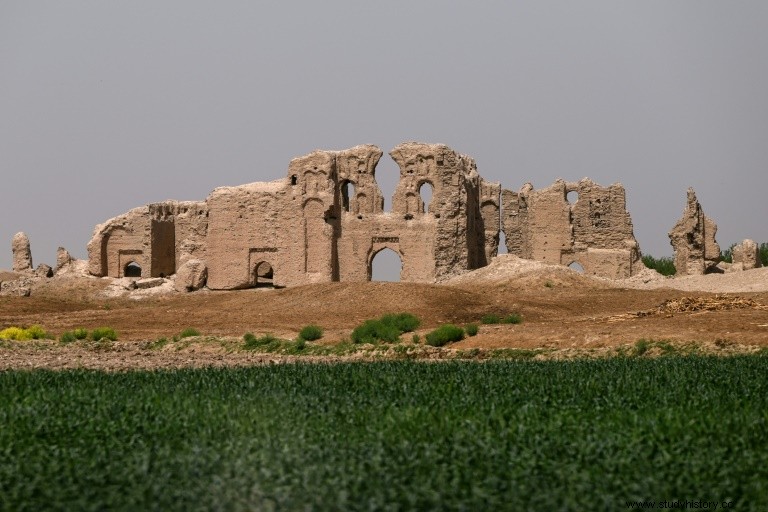
The ruins of the Qala-e-Bost fortress, near Lashkar Gah, Helmand province, on March 27, 2021 in Afghanistan (AFP - WAKIL KOHSAR)
"When Nad Ali district (near Lashkar Gah) fell, I came here" a few months ago, says Agha, a 33-year-old policeman. "I want the government to give me a place to live. Look at the cracks in the roof. I'm afraid it will fall one night" , he adds. A few hundred people are said to live here, many of them police families too destitute to rent real accommodation.
They don't receive any help and have no access to electricity or running water."I should have the support of the government, because I lost three sons who served it" , sighs Bibi Halima, 48, who fled the nearby district of Grishk, where fighting is raging. It is "a place for ghosts, not for humans", laments Khudai Nazar, 54, another displaced person. "Every house is full of widows (...) If our children die, no one cares" , adds Sayed Agha, 55, who says he is ready to leave at any time if offered.
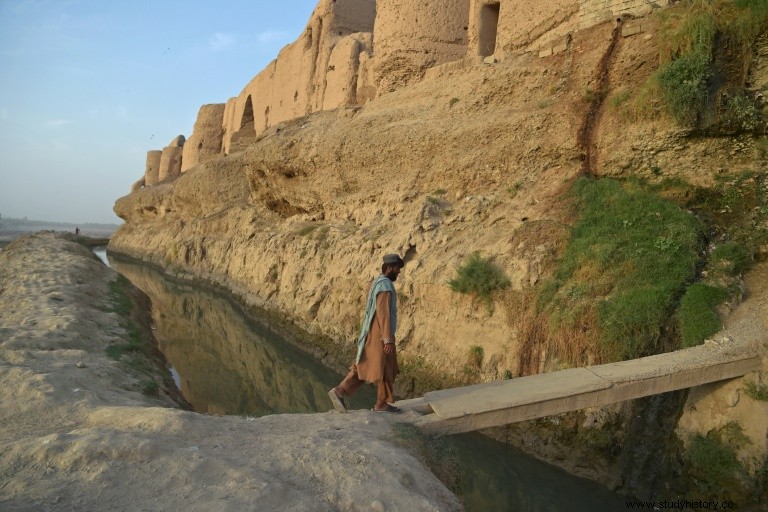
A man crosses a bridge in front of the Qal-e-Kohna palace near Lashkar Gah, Helmand province, on March 27, 2021 in Afghanistan (AFP - WAKIL KOHSAR)
In Lashkar Gah, it is rumored that officials have seized most of the ruins to rent them to refugees, but silence on the subject remains. "The site has been taken over by people who rent houses to those who have fled dangerous areas" , admits, however, in Kabul Farid Haidari, an official of the capital's archeology department.
Keep the site
Dafa had explored the site in the 1950s and there has been no archaeological work since then. She had identified the palaces, the mosque and the other ancillary buildings, such as the pottery and craft workshops, or the coolers that allowed fresh food to be kept.
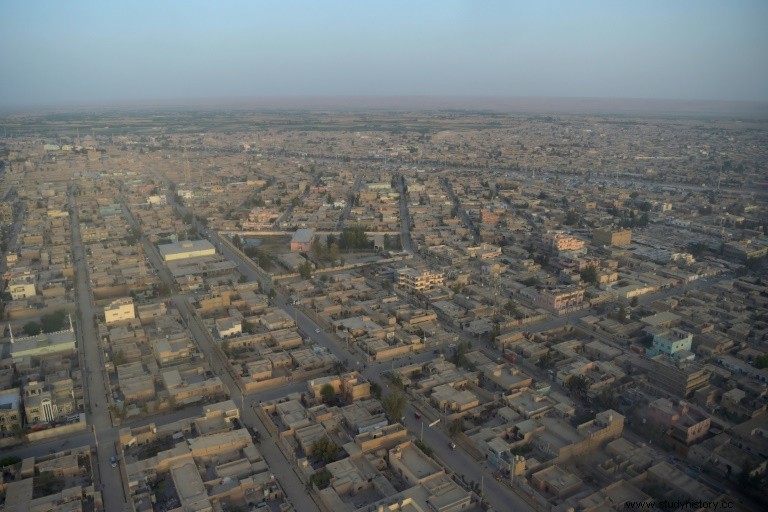
Aerial view of Lashkar Gah, Helmand province, on March 25, 2021 in Afghanistan (AFP - WAKIL KOHSAR)
She had also excavated the famous paintings composed of court scenes, rare for a time when the representation of figurative images of living beings was already frowned upon in Islam. These paintings, which had been placed in the Kabul museum, were then destroyed or stolen there during the civil war of the 1990s. But photos remain. Philippe Marquis is worried about the destruction caused by "squatters" and looters. He also fears the effects of global warming, which could cause a flood of the river that could devastate the site.
He would like to turn it into "archaeological park" , involving the displaced in its conservation so that they earn a living and can leave the place. "The paradox is that in their own way people protect the place, because it is their home " , he admits.
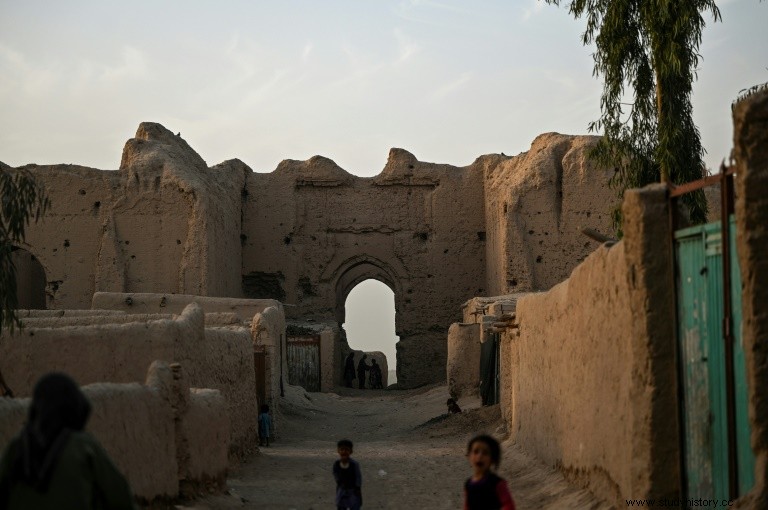
Displaced families live in the ruins of the city of Qal-e-Kohna, near Lashkar Gah, Helmand province, on March 27, 2021 in Afghanistan (AFP - WAKIL KOHSAR)
Shah Mahmud Haseat, 74, who wrote a book on the citadel of Bost, which has remained unoccupied because it is located further from Lashkar Gah, is however more circumspect about the future of the place. "I tried to convince (the government) to protect the site, but they did nothing" , he regrets. "We are really afraid that our history will be destroyed."
